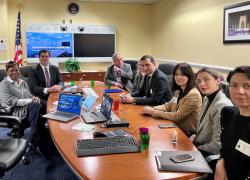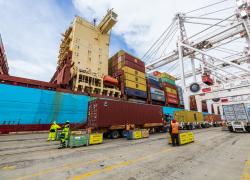
The Office of Labor-Management Standards recently issued its Revision of the Form LM-10 Employer Report. With this revision, employers who are already required to file Form LM-10 reports disclosing expenditures they made to persuade or surveil employees must now identify whether the employees subject to the persuasion or surveillance work on a federal contract or subcontract. If they do check “yes,” they must also disclose their government-provided Unique Entity Identifier used as a contractor as well as the federal agencies involved in their contract.
According to the Government Accountability Office, federal contracting amounted to $637 billion in fiscal year 2021. And while some employer expenditures to persuade or surveil may be legal, under Executive Order 13494 ("Economy in Government Contracting") they are not reimbursable against the federal contract. But they may still be reportable. And reportable expenditures must be submitted annually to OLMS under the Labor-Management Reporting and Disclosure Act, or LMRDA.
The LMRDA, enacted after an investigation by the Senate Select Committee on Improper Activities (the McClellan Committee), was designed to supplement the National Labor Relations Act of 1935. The NLRA guaranteed that workers would have the protected right to organize unions to represent their interests in the workplace and to bargain collectively over their wages and working conditions, all without employer interference. The preamble to the LMRDA reiterates the national policy set out in the NLRA that, “in the public interest, it continues to be the responsibility of the Federal Government to protect employees’ rights to organize, choose their own representatives, bargain collectively, and otherwise engage in concerted activities for their mutual aid or protection.”
In that spirit, Congress included Section 203(a) of the LMRDA requiring that employers report annually expenditures or arrangements they made to persuade or surveil their employees. Indeed, among the documented abuses that prompted Congress to enact the LMRDA was questionable conduct by some employers and their labor relations consultants, which interfered with the rights protected by the NLRA. Union busting is not a recent phenomenon. Congress was concerned that labor consultants, acting on behalf of management, worked directly or indirectly to discourage legitimate employee organizing drives and engage in anti-union activities. Congress concluded that such consultant activities “should be exposed to public view” because they are “disruptive of harmonious labor relations and fall into a gray area,” even if the consultant’s conduct was not unlawful or not an unfair labor practice under the NLRA (see 1959 Senate Report No. 86-187 at 6, 10-12, reprinted in 1 NLRB, Legislative History of the Labor-Management Reporting and Disclosure Act of 1959, at 397, 402, 406-408.).
Thus, expenditures for lawful and unlawful conduct in this “gray area” have been reportable and made available to the public for over 60 years. And over time this “gray area” has grown into a multi-million-dollar business. Employers who did file LM-10s with OLMS in fiscal year 2022 reported spending $33 million to persuade or surveil their employees in connection with a labor dispute.
Since the federal policy underlying the LMRDA is centered on supporting workers’ rights to organize and bargain with their employers, it is entirely appropriate for workers and the public to know when federal contractors take actions that are not in line with that policy. Until the adoption of this revision, that information has been nearly invisible. The LMRDA provides workers with tools that help build labor-management transparency concerning unions, employers and consultants. This revision of the Form LM-10 – which will be effective for all reports filed on or after Aug. 28, 2023 – adds a new tool to that toolbox. We invite you to read this fact sheet to learn more about the Form LM-10 revision and to visit our website to learn more about our office's mission to promote labor and management transparency.
Jeffrey Freund is the director of the Office of Labor-Management Standards.

 U.S. Department of Labor Blog
U.S. Department of Labor Blog






